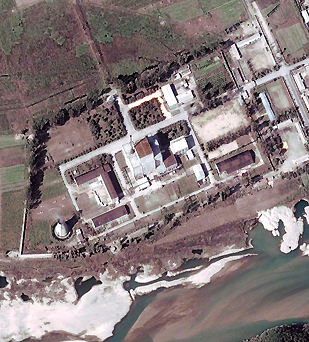Factfile: N Korea’s nuclear drive
An overview of North Korea’s nuclear weapons programme.

 |
| The Yongbyon reactor has been the centre of North Korea’s nuclear programme [EPA] |
According to US and South Korean intelligence, North Korea’s nuclear program dates back to at least the 1980s, and is centred at the Yongbyon plant, about 100 km north of Pyongyang.
In October 2006 the North conducted its first nuclear weapon test with a plutonium-based bomb.
Keep reading
list of 4 itemsAfter the Hurricane
World’s coral reefs face global bleaching crisis
Why is Germany maintaining economic ties with China?
The underground test was considered small by the standards of established nuclear powers, leading to widespread debate among experts as to how successful the test actually was.
US intelligence officials believe North Korea has produced about 50 kg of plutonium at Yongbyon, which they believe would be enough for about eight nuclear weapons.
The exisestence of these weapons has never been confirmed, although North Korean statements have referred to the country being in posession of a “stockpile” of nuclear weapons.
Yongbyon
| Making the bomb |
|
Basic nuclear fission devices can be made using either uranium or plutonium.
|
The Yongbyon facility consists of a five-megawatt reactor, a fuel fabrication plant and a plutonium reprocessing plant, designed to extract weapons-grade plutonium from spent nuclear fuel rods.
In October 1994, the United States and North Korea struck a deal to freeze all work at Yongbyon.
In return an international consortium known as KEDO was to construct two light-water nuclear reactors, which produce energy but are considered less able to produce plutonium for weapons.
Although construction work began on the reactors, the project has since been cancelled.
In 2002 US officials confronted North Korea, accusing it of reneging on previous commitments not to develop nuclear weapons by operating a clandestine programme to enrich uranium for use in weapons.
North Korea, which has not publicly admitted to having such a programme, has ample supplies of natural uranium and could, in theory, enrich it to weapons grade away from the gaze of spy satellites.
In February 2005, a statement released in North Korean media says it will “bolster its nuclear weapons arsenal” – the first admission that it has nuclear weapons.
Warhead doubts
Despite the October 2006 test, experts say it remains doubtful that North Korea has mastered the technology to make a nuclear weapon in deliverable form – i.e. small enough to mount on a warhead or dropped from an aircraft.
The North does have an active missile development programme and is working on a long range missile known as the Taepodong-2.
The missile may eventually put the US in range of a North Korean strike, but the most recent test of a Taepodong-2, in 2006, was thought to have failed soon after launch.
According to South Korean defence estimates, the North Korean air force is large in numbers but in relatively poor shape. It is thought to have around 780 ageing Soviet-era fighters and 80 bombers.
 Uranium is a naturally occurring element which is a key ingredient in nuclear power generation, and, in a highly enriched form (uranium-235) in nuclear weapons. Enrichment usually takes place in a series – or “cascade” – of high precision centrifuges.
Uranium is a naturally occurring element which is a key ingredient in nuclear power generation, and, in a highly enriched form (uranium-235) in nuclear weapons. Enrichment usually takes place in a series – or “cascade” – of high precision centrifuges.